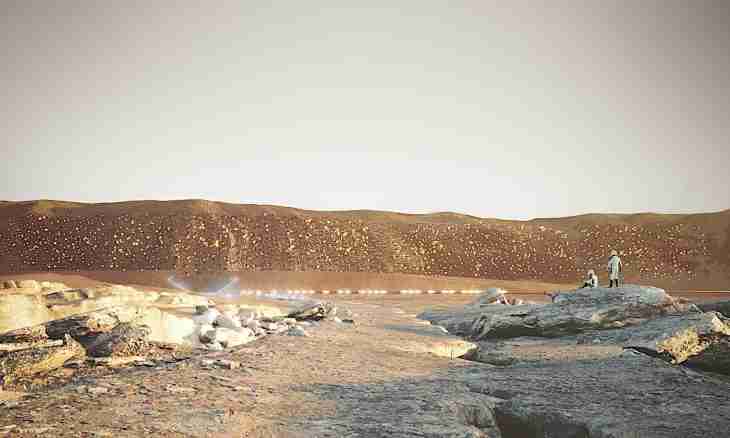Mars is the very first planet to which the person showed keen interest. Its blood-red color becomes even more noticeable at observation in the telescope. The surface of Mars has a reddish shade because of a large amount of impurity of oxides of iron.
Instruction
1. Mars can be seen in the sky only during the periods of oppositions, sometimes it looks brighter than Jupiter. The atmosphere of Mars for 95% consists of carbon dioxide, its average pressure is 160 times less, than on Earth. In the winter carbonic acid turns into dry ice, and per cold time of day at the bottom of craters and over lowlands there is fog.
2. The southern hemisphere of Mars is covered with ancient highlands, in northern areas there are a lot of young plains. Assume that it is connected with falling of a large asteroid therefore in the north of the planet much less craters. The surface of Mars sometimes changes color, it is explained by long dust storms.
3. Sharp temperature differences are characteristic of Mars, in areas of the lake Phoenix on the plateau of the Sun happens from -53 °C to +22 °C in the summer, and in the winter from -103 °C to -43 °C. Temperature of a surface of the planet was well studied on observations in infrared beams. The lowest temperature was recorded over a winter polar hat, it made -139 °C. During a summer solstice the top layer of earth gets warm up to 0 °C.
4. Because of remoteness from the sun climate on Mars much surovy, than on Earth. Change for and nights and also change of seasons on this planet proceeds almost as well as on our planet. However year on Mars is twice longer terrestrial, seasons last longer too, and their character considerably differs in southern and in northern planet hemispheres. In the northern hemisphere summer long, but cool, and the winter is short I soft. In southern - all on the contrary, winter long and severe, and summer short and warm.
5. Scientists assume that several billions years ago on Mars there was water, then it was in liquid state, and carbon dioxide evaporated. As well as on Venus, there could be greenhouse effect here, but because of small weight Mars began to lose gradually the atmosphere owing to what polar caps and permafrost appeared. We can observe them and now. Now on Mars there is no liquid water, but assume that his polar caps consist of water ice with impurity of solid carbonic acid.
6. On Mars there is the largest mountain of the Solar system — the Olympus, its height is equal to 27,400 m, and diameter of the basis reaches 600 km. On the planet it is not recorded any active volcano. However the traces of volcanic ash which remained on slopes of its mountains can say that earlier the planet was volcanic active.

